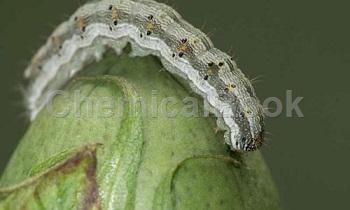1. Prevention and control of cotton pests
(1)Bollworm
Apply during the peak hatching period, use 20-40 ml of 10% bifenthrin EC per acre and spray 50-100 kg of water evenly. The insecticide and bud-preserving effect will be good within 7-10 days after application. This dosage can also be used to control pink bollworm. The appropriate period for control is to use the medicine twice during the peak hatching period of the second and third generation eggs.
(2) Cotton red spider
Apply lotus when adult mites and nymphal mites occur. Use 30-40 ml of 10% bifenthrin EC per acre and spray 50 kg of water evenly. The residual effect period is about 12 days. It can also control cotton aphids and bridge-building insects. , leaf rollers, thrips, etc. (if it is specifically used to control cotton aphids, the dosage can be halved).

2. Prevent and control vegetable pests
(1)Eggplant red spider
During the occurrence period of adult mites and nymphal mites, use 30-40 ml of 10% bifenthrin EC per acre and evenly spray 50 kg of water to effectively control the damage within 10 days.
(2) Whitefly
In the early stage of whitefly occurrence, when the insect population density is not high (about 2/plant), the dosage is: 20-25 ml of 10% bifenthrin EC per acre for cucumbers and tomatoes cultivated in greenhouses, and water Spray 50 kilograms evenly; for open field cultivation, use 25-40 ml of 10% bifenthrin EC and spray 50 kilograms of water evenly. The damage can be effectively controlled within 15 days. When the insect population density is high, the control effect of the same dosage is unstable.
(3) Vegetable aphid
Apply during the onset period and spray with 3000~4000 times dilution of 10% bifenthrin EC to control the damage. The residual effect period is about 15 days. This dose can also control a variety of leaf-eating pests, such as cabbage caterpillars, diamondback moths, etc.
3. Prevent and control fruit tree pests
(1) Peach heartworm
Apply during the peak hatching period. When the egg and fruit rate reaches 0.5%-1%, spray with 3300-10000 times dilution of 10% bifenthrin EC. Spray 3-4 times throughout the season for effective control. It is harmful and has a residual validity period of about 10 days.
(2)Apple Star Spider
Before or after the apple blossoms, during the adult mite and nymph mite occurrence period, apply the pesticide every 300-10,000 times when there are an average of 4 mites on the leaves. When the mite population density is low, the residual effect period is 24-28 days.
(3)Hawthorn red spider
In the occurrence period of adult mites and nymphal mites on hawthorn trees, apply pesticide when the mite population density reaches the control index. Use 10% bifenthrin EC 3 dilution to spray 3300-5000 times of 10% bifenthrin EC. Diluent spray can effectively control its hazards within 15-20 days.
(4) Citrus Leaf Miner
Apply the pesticide at the early stage of new shoot growth. Spray 10% bifenthrin EC with 3300-5000 times dilution, and spray again every 7-10 days. It can play a good role in killing insects and protecting shoots. .
(5)Citrus red spider
For early stage spraying of adult mites and nymphal mites, use 2500-5000 times of 10% bifenthrin EC spray. The residual validity period is about 7 days. Use at low temperatures can extend the residual validity period, but the control effect is not good at high temperatures.
4. Prevention and control of tea tree pests
(1) Tea geometrid, tea caterpillar, tea fine moth
Apply the pesticide during the 2-3rd instar stage of larvae, spray with 3000-5000 times dilution of 10% bifenthrin EC, or use 10-20 ml of 10% bifenthrin EC per acre (active ingredient 1- 2 grams), spray it with water, and the control effect is about 90% 24 hours after application. This dose can also be used to control black poisonous moth in the 4-5 instar larval stage.
(2)Tea green leafhopper and mosquito weevil
In the occurrence period, apply pesticide when there are 5-6 worms per louver. Use 3300-5000 times dilution of 10% bifenthrin EC or spray with an effective concentration of 20-30 mg/kg. The residual effect period is 7-10 days. This dose can also be used to control black thorn whitefly at the end of the first generation egg hatching period, with good results.
(3)Tea gall mite
For adult mites and nymph mites, apply pesticide when there are 4-8 mites per louver. Use 10% bifenthrin EC 3300-5000 times dilution or effective concentration. This dose is also suitable for tea tarsal line mites. , spray mites with short beards of 20-30 mg/kg, but the effect is not stable enough.
5. Prevention and Control of Mushroom Mites
Use 1 kilogram of 2.5% bifenthrin EC, mix 2000 kilograms of culture medium or spray 2000 times dilution from the mouth of the strain bottle (3 ml per bottle) and then sterilize and inoculate, which can effectively control mites The occurrence of hyphae can also promote the growth of mycelium and improve the quality of mycelium.
Note:
1. Do not mix it with alkaline substances to avoid chemical reaction, decomposition and failure.
2. It is highly toxic to bees, silkworms, and aquatic organisms. When using it, be sure to prevent contamination of water sources.
3. It is prohibited to use in paddy fields

 微信扫一扫打赏
微信扫一扫打赏

